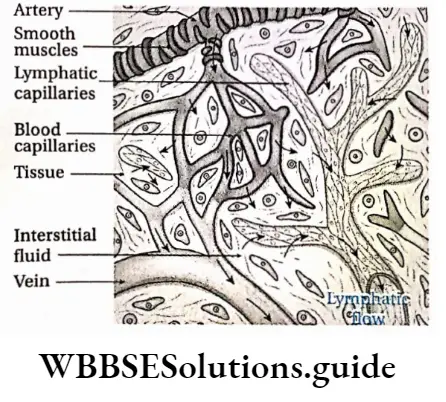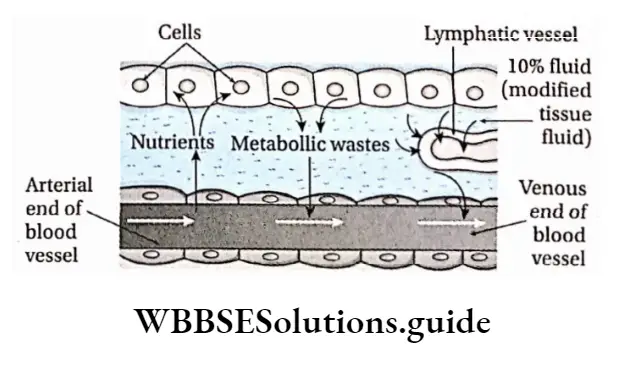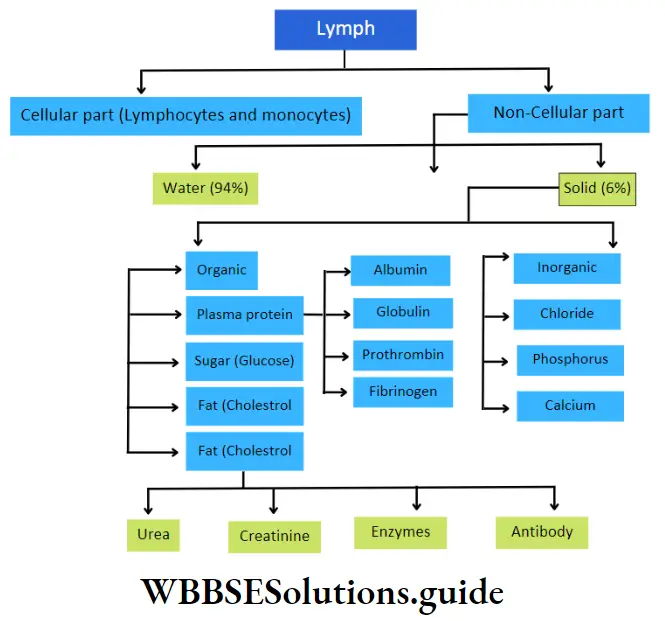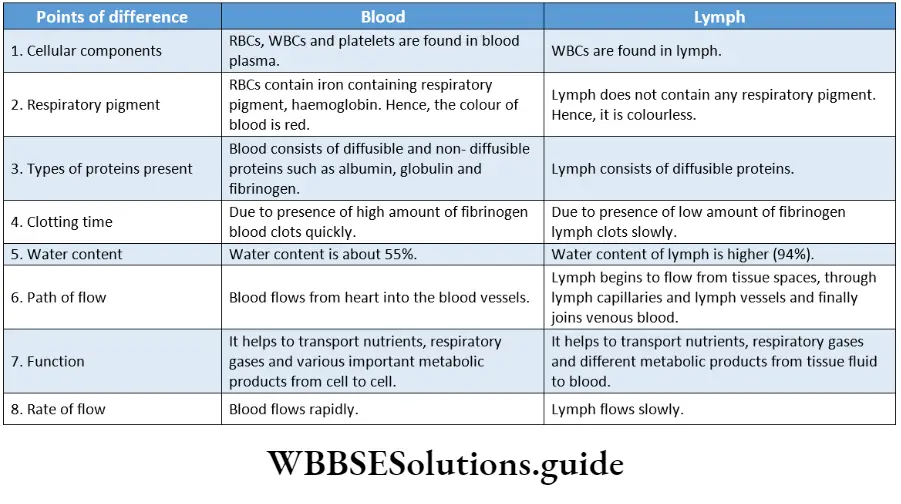Lymph
Lymph Definition: The transparent, colourless or pale yellow tissue fluid that contains white blood cells (particularly modified lymphocytes) is called lymph.
“composition and role of lymph in human circulatory system”
This fluid circulates throughout the lymphatic system and returns to the venous blood by the thoracic and right lymphatic ducts. It transfers materials from blood to the body cells and vice versa.
“lymphatic system definition “

Origin: In arteries, blood flows at a higher pressure than in veins. Due to this, blood plasma filters out from the arterial capillaries and moves into the intercellular space to form interstitial fluid.
“WBCHSE class 11 biology notes for lymph”
This fluid contains water, glucose, amino acids, oxygen, carbon dioxide and several other electrolytes.
The exchange of different substances between blood and cells takes place via interstitial fluid.
Hence, its composition changes continuously. Some of this fluid is reabsorbed by the blood capillaries but most of it enters the lymph capillaries.
Read and Learn More Class 11 Biology Notes
This fluid collected inside the lymph capillaries is called lymph. At the time of formation, lymph is a clear watery liquid which has the same composition as that of interstitial fluid.

Composition Of Lymph
Lymph have a similar composition to blood plasma. Depending on the destination, lymph contains different concentrations of lymphocytes, proteins and fats. It has a large number of leucocytes (mostly lymphocytes) ranging from 500-75000/mm3. The lymph does not contain platelets.

“composition of lymphatic system “
The non-cellular portion of lymph contains water (94%) and solids (6%). The organic components of lymph include various proteins, fats, glucose and other non-protein nitrogenous substances urea, creatinine, enzymes, etc.).
“difference between blood and lymph class 11 WBCHSE notes”
Total protein content varies with the region from which the lymph drains. In fasting conditions fat content is low but after a fatty diet, it becomes higher. Inorganic components such as calcium, phosphorus, and chlorides are also present in lymph.

“lymph structure and function “
Functions Of Lymph
Transportation: Lymph is modified interstitial fluid, that is drained from the tissue and moved back to the circulatory system via the lymphatic network.
The lymphatic network transports important materials such as vitamins, digested food components, O2 etc., in the body. They also take away the waste products such as CO2, nitrogenous and non-nitrogenous wastes, etc., from the cells.
“detailed notes on lymph and its functions for WBCHSE class 11”
Removal of excess tissue fluid: Lymph returns protein and excess interstitial fluid to peripheral circulation.
Absorption: There are several small finger-like projections present on the inner wall of the small intestine, known as villi. Each of these villus consists of a lymphatic vessel, known as lacteal. Lacteal absorbs the digested fat and transports it to the bloodstream.
| Class 11 Biology | Class 11 Chemistry |
| Class 11 Chemistry | Class 11 Physics |
| Class 11 Biology MCQs | Class 11 Physics MCQs |
| Class 11 Biology | Class 11 Physics Notes |
“components of lymphatic system “
Disease prevention: The lymphatic system helps the body fight against diseases as the system contains a high concentration of lymphocytes in lymph nodes. The invading microorganisms and foreign particles are destroyed in the lymph nodes.
“structure and function of lymph nodes “

